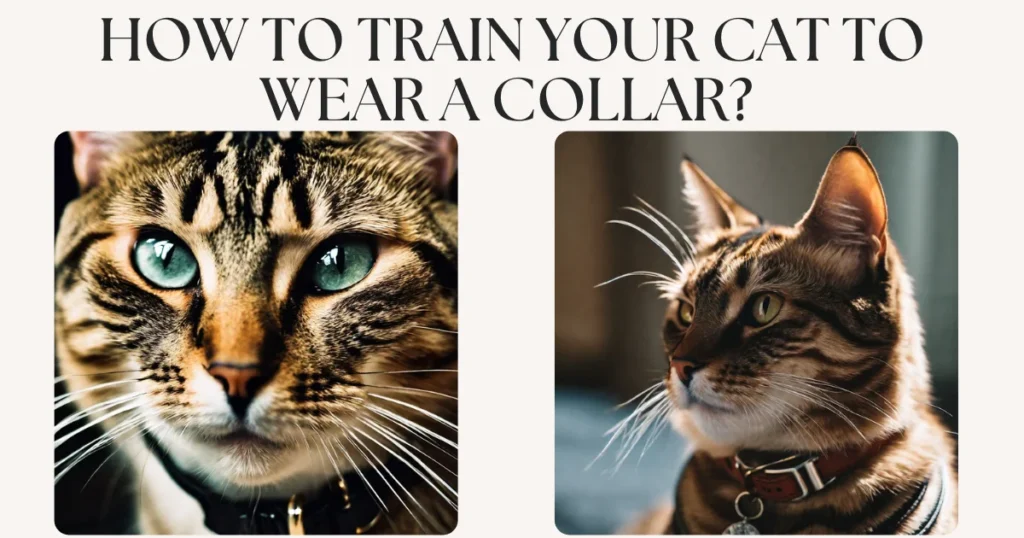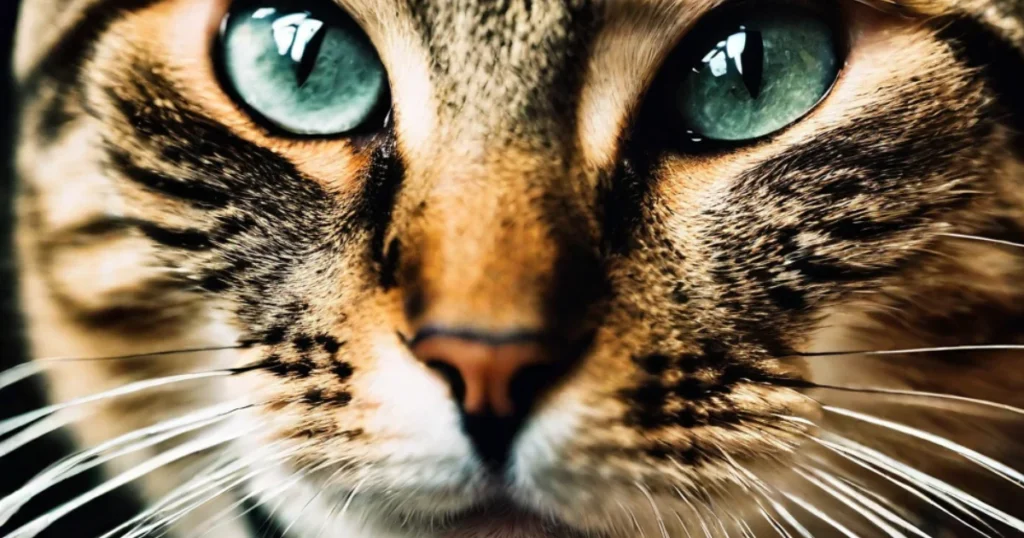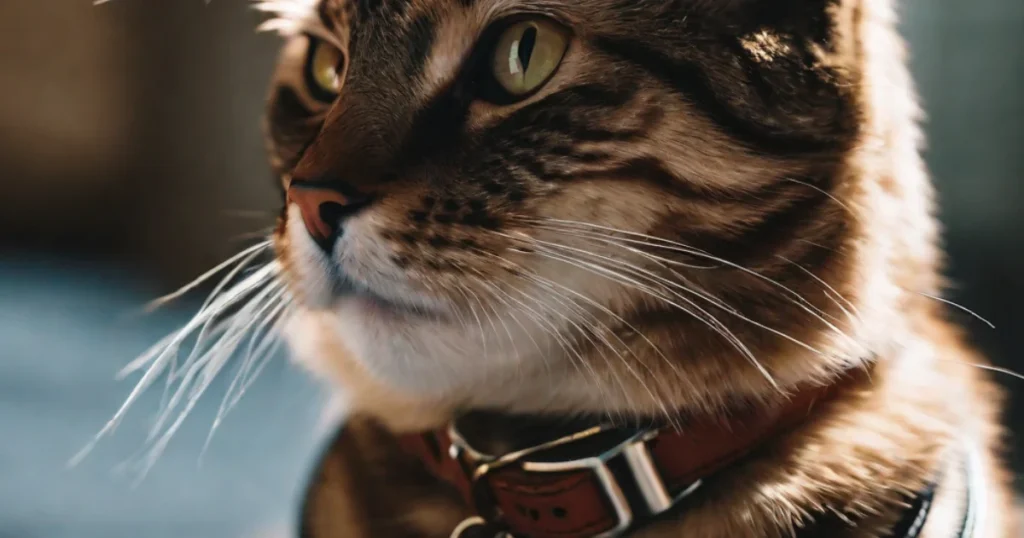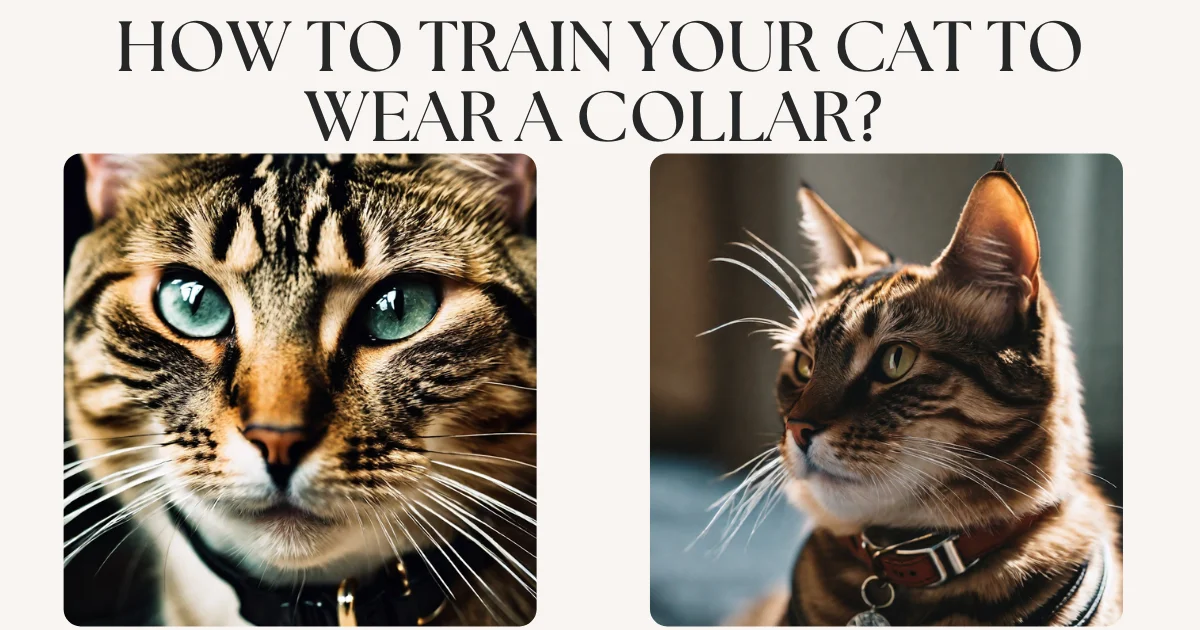Cats are known for their independence and strong will, making it a challenge to train them to do anything they don’t want to. One common struggle many cat owners face is getting their feline friend to wear a collar. Whether it’s for identification purposes or simply to add some style to your furry companion, training your cat to wear a collar is possible with the right approach. In this blog post, we’ll discuss some tips and tricks to help you successfully train your cat to wear a collar and make them the trendiest kitty on the block.
In Short, How to Train Your Cat to Wear a Collar:
Step 1: Choose the right (safety) collar
Select a collar that is specifically designed for cats and prioritizes their safety. Look for a breakaway or safety collar that easily releases if it gets caught on something, reducing the risk of injury.
Step 2: Introduce the collar
Allow your cat to become familiar with the collar before attempting to put it on. Place the collar near their usual resting area or in an area where they spend time, allowing them to sniff and investigate it at their own pace. This helps create positive associations with the collar.
Step 3: Put the collar on your cat gradually
Start by placing the collar loosely around your cat’s neck for short periods of time. Use treats, praise, or playtime as positive reinforcement to reward your cat for wearing the collar. Gradually increase the duration of collar wear each day, taking into account your cat’s comfort level.
Step 4: Monitor your cat’s reaction
Observe your cat’s behavior when wearing the collar. Ensure they are not showing signs of distress, such as excessive scratching, trying to remove the collar, or displaying unusual behaviors. If you notice any negative reactions, remove the collar and try again later with shorter sessions or consult a veterinarian for guidance.

Table of Contents
Understanding the Purpose of Cat Collars
Cat collars serve a variety of purposes, and it’s important to understand their importance before training your cat to wear them. One of the main reasons for a cat collar is identification. A collar with your contact information attached can be a lifesaver if your feline friend ever goes missing. It allows anyone who finds your cat to easily reach out to you and return your beloved pet home.
Additionally, cat collars can also be a fashion statement. There are endless options when it comes to collar designs, from simple and sleek to fun and colorful. A collar can add a touch of personality to your cat’s overall appearance and make them stand out in style.
Moreover, cat collars can also have practical uses. Some collars are designed with safety features, such as breakaway clasps that release if the collar gets caught on something. These collars help prevent choking or injury, giving you peace of mind when your cat roams around.
Choosing the Right Collar for Your Feline Friend
When it comes to choosing the right collar for your feline friend, there are a few important factors to consider. First and foremost, you want to ensure that the collar is safe and comfortable for your cat to wear. Look for collars that are made from soft and lightweight materials, such as nylon or fabric, that won’t irritate your cat’s skin or weigh them down.
Another important consideration is the size and adjustability of the collar. It’s crucial to measure your cat’s neck accurately to ensure a proper fit. The collar should be snug enough that it can’t easily slip off, but not too tight that it restricts your cat’s movement or causes discomfort. Look for collars with adjustable straps that allow you to customize the fit to your cat’s neck size.
Additionally, think about the purpose of the collar. If you’re primarily looking for identification purposes, consider a collar with a built-in ID tag or a space where you can attach your contact information. If you’re more interested in a fashion statement, explore the wide variety of collar designs available, from simple and elegant to bold and vibrant.
Lastly, don’t forget to take your cat’s preferences into account. Some cats may be more comfortable with a breakaway collar that releases if it gets caught on something, while others may prefer a traditional buckle collar. Pay attention to your cat’s behavior and choose a collar that aligns with their comfort and personality.

Gradual Introduction: Familiarizing your Cat with the Collar
When it comes to introducing your cat to wearing a collar, a gradual approach is key. Cats are creatures of habit and may feel uneasy or resistant to anything new. So, take it slow and give your feline friend the time they need to adjust.
Start by simply placing the collar near your cat’s favorite resting spot. Let them sniff it and investigate it at their own pace. You can even leave some treats or toys near the collar to create a positive association. This will help your cat view the collar as something pleasant rather than a source of stress.
Next, gently touch your cat’s neck with the collar while giving them treats or praise. Repeat this process for a few days until your cat becomes comfortable with the sensation of the collar against their skin. Gradually increase the duration of time the collar stays on, starting with just a few minutes and gradually working your way up to longer periods.
It’s important to never force the collar onto your cat or try to restrain them. This will only make them associate the collar with negative experiences. Instead, let your cat come to you when they’re ready to have the collar put on. This way, they’ll feel in control and more willing to accept it.
Guiding Through Positive Reinforcement and Patience
Training your cat to wear a collar requires patience, positive reinforcement, and a gentle guiding hand. Start by associating the collar with positive experiences. Whenever you bring out the collar, offer your cat treats or engage in playtime to create a positive association. This will help them see the collar as something rewarding and enjoyable.
When it’s time to put the collar on, start by introducing it gradually. Place it near your cat’s resting spot or on their favorite blanket. Allow them to sniff and investigate it at their own pace. Then, gently touch their neck with the collar while offering treats or praise. Repeat this process daily until your cat feels comfortable with the sensation.
Gradually increase the duration your cat wears the collar, starting with just a few minutes and gradually working up to longer periods. Always observe your cat’s behavior to ensure they are not stressed or uncomfortable. If they show signs of distress, take a step back and give them more time to adjust.
Remember to provide plenty of positive reinforcement throughout the process. Celebrate small victories and reward your cat with treats, playtime, or praise. This will help them associate the collar with positive experiences and reinforce their willingness to wear it.

Dealing with Potential Challenges
Training your cat to wear a collar can come with its fair share of challenges, but with the right approach and a little patience, you can overcome them. One potential challenge you may face is your cat trying to remove or scratch the collar. This is an instinct for many cats, as they may see the collar as something foreign to their body. To tackle this challenge, distract your cat with playtime or treats to redirect their attention away from the collar. Gradually increase the duration of time your cat wears the collar to help them get used to it.
Another challenge you may encounter is your cat getting stuck or caught on objects while wearing the collar. This can be particularly dangerous if the collar does not have a safety feature like a breakaway clasp. To prevent this, always choose a collar with a safety mechanism that will release if it gets caught on something. Regularly check the fit of the collar to ensure it is not too loose or too tight, as this can also lead to potential hazards.
Some cats may also experience discomfort or skin irritation when wearing a collar, especially if they have sensitive skin. To address this challenge, opt for collars made from soft and lightweight materials like nylon or fabric. Additionally, periodically check your cat’s neck for any signs of irritation or redness and adjust the collar as necessary.
Lastly, it’s important to remember that not all cats may be willing to wear a collar, no matter how much training you provide. If you’ve tried various methods and your cat continues to show distress or resistance, it may be best to explore alternative identification options such as microchipping.
Monitoring the Progress: Signs That Your Cat Has Adjusted to Wearing a Collar
Training your cat to wear a collar is a process that requires patience and consistency. As you work through the training steps, it’s important to monitor your cat’s progress and look for signs that they have adjusted to wearing a collar.
One of the first signs that your cat has adjusted to wearing a collar is that they no longer try to remove it or scratch at it excessively. Cats naturally have a grooming instinct, so it’s normal for them to occasionally groom around their collar. However, if your cat is constantly scratching at the collar or trying to take it off, it may be a sign that they are still uncomfortable with it. On the other hand, if your cat seems relaxed and does not fuss with the collar, it’s a good indication that they have accepted it as a part of their daily routine.
Another sign of progress is when your cat becomes indifferent to the presence of the collar. When your cat stops paying extra attention to the collar and goes about their usual activities without any discomfort or disruption, it means that they have become accustomed to wearing it. You may notice that your cat plays, eats, sleeps, and grooms as usual, without any negative effects from the collar.
Additionally, if your cat does not exhibit any signs of distress or discomfort when wearing the collar for extended periods, it’s a positive indication that they have adjusted to it. You can gradually increase the duration your cat wears the collar to help them build tolerance and confidence.
The Do’s and Don’ts for Cat Collar Training
Training your cat to wear a collar requires a careful and patient approach. To help you navigate the process, here are some important do’s and don’ts to keep in mind:
1. Do choose a collar that is safe, comfortable, and appropriate for your cat’s size and needs. Look for lightweight materials and adjustable straps.
2. Do start by gradually introducing the collar to your cat. Let them sniff and investigate it at their own pace, and associate it with positive experiences like treats and playtime.
3. be consistent and patient. Training takes time, and every cat is unique. Celebrate small victories and reinforce positive behavior with rewards and praise.
4. Do monitor your cat’s behavior and adjust the training as necessary. If your cat shows signs of distress or discomfort, take a step back and give them more time to adjust.
5. Do check the fit of the collar regularly. Ensure it’s snug enough that it can’t easily slip off, but not too tight that it restricts your cat’s movement or causes discomfort.
1. Don’t force the collar onto your cat or try to restrain them. This will only create a negative association with the collar.
2. Don’t leave the collar on unsupervised. Always supervise your cat while they wear the collar, especially in the early stages of training.
3. Don’t ignore signs of distress or discomfort. If your cat consistently tries to remove or scratch the collar, or if they exhibit any skin irritation, it may be necessary to reassess the collar or explore alternative identification options.
4. Don’t give up. Training your cat to wear a collar may take time and patience, but with a consistent and positive approach, most cats can eventually adjust to wearing one.
Conclusion
As cat owners, we want the best for our feline friends. Whether it’s for identification, fashion, or safety, training your cat to wear a collar can enhance their life in various ways. By understanding the purpose of cat collars and choosing the right one for your cat’s needs, you set the foundation for successful training.
Remember, the key to training your cat to wear a collar is patience, positive reinforcement, and a gradual approach. Take it slow, let your cat adjust at their own pace, and celebrate every small step forward. By creating positive associations with the collar through treats, playtime, and praise, you can guide your cat through the process and help them embrace this new accessory.
Be mindful of potential challenges along the way, such as your cat trying to remove the collar or getting caught on objects. Address these challenges with distraction techniques, safety features on the collar, and regularly checking the fit. And don’t forget to monitor your cat’s progress, looking for signs that they have adjusted to wearing the collar comfortably.
FAQs:
Q: How do you train a cat to use a collar?
A: Training a cat to use a collar involves gradual introduction and positive reinforcement. Start by choosing a suitable collar and allowing the cat to become familiar with it. Then, gradually put the collar on for short periods, rewarding the cat with treats and praise. Increase the duration over time, using positive associations to make wearing the collar a positive experience.
Q: How long does it take for a cat to get used to a collar?
A: The time it takes for a cat to get used to a collar can vary depending on the individual cat. Some cats may adjust quickly within a few days, while others may need several weeks. Patience and consistency in the training process are key. It’s important to go at the cat’s pace and not rush the adjustment period.
Q: Why does my cat not want to wear a collar?
A: Cats may resist wearing a collar for various reasons. It could be due to unfamiliarity, discomfort, or feeling restricted. Some cats may need more time and positive reinforcement to accept and become comfortable with wearing a collar. It’s important to ensure the collar fits properly and is not causing any discomfort or irritation.
Q: When can a cat start wearing a collar?
A: Cats can start wearing a collar once they are comfortable with the idea and have been properly introduced to it. It is generally recommended to start collar training when the cat is still a kitten, as they tend to be more receptive to new experiences. However, adult cats can also be trained to wear a collar with patience and proper training techniques.

